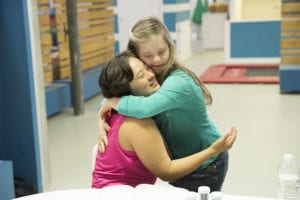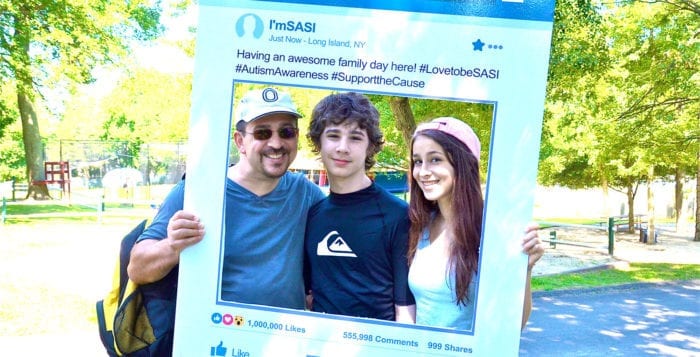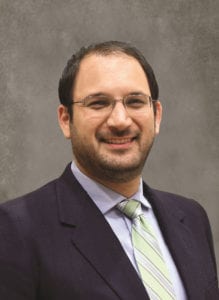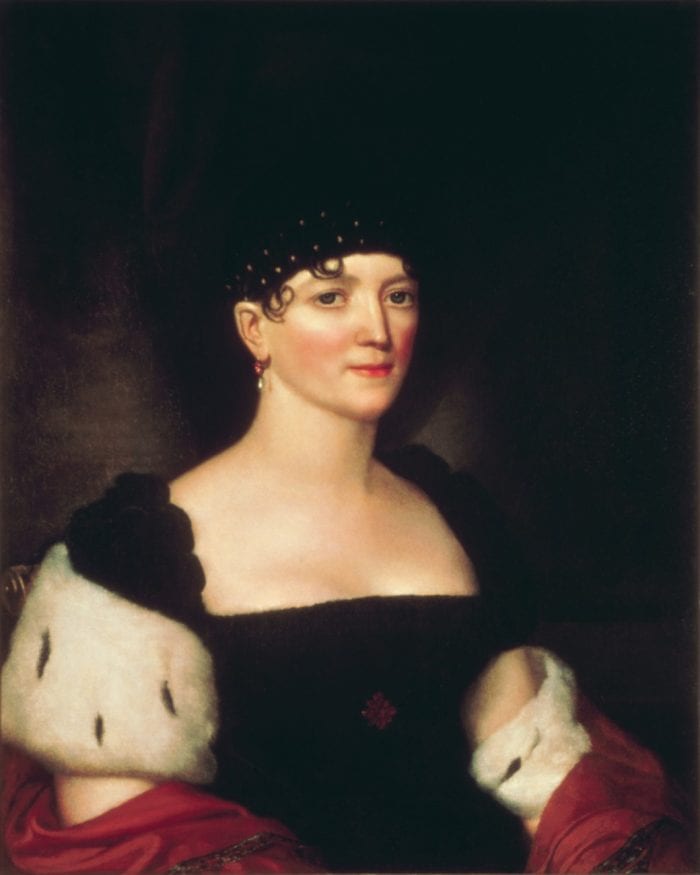Young adults with Down syndrome break free from limitations in award-winning show
In 2015, A&E Network collaborated with the team that produced “The Real World” to create an original docuseries called “Born This Way.” Just last week, the show took home an Emmy for outstanding unstructured reality program at the Creative Arts Emmy Awards in Los Angeles, beating out a field of nominees that included HBO’s “Project Greenlight,” Discovery Channel’s “Deadliest Catch” and CNN’s “United Shades of America,” among others.
“We have been overwhelmed and moved by the feedback we’ve received for ‘Born This Way’ from viewers, as well as people with disabilities and their family members,” said Elaine Frontain Bryant, executive vice president and head of programming at A&E Network, in a press release. “It’s rare to be able to present a show that changes the way we see the world; we believe ‘Born This Way’ is one of those shows.”
The docuseries also received two nominations for outstanding picture editing for reality programming but did not win in that category. Now in its second season, the reality show follows the lives of seven young adults — John (JT), Megan, Cristina, Sean, Rachel, Steven and Elena — with Down syndrome through the ups and downs of dating, employment and the quest for independence. It also gives their parents, who are also part of the cast, a chance to weigh in on the joys and challenges of raising someone with an intellectual disability.
Every episode is as inspiring as the last as many of the cast members look at their intellectual disability with a sense of unbridled optimism. According to Steven, it’s more like “Up Syndrome.”
Steven has mosaic Down syndrome and a contagious smile. His disability is rare and higher functioning, so he’s always felt stuck “in the middle” growing up. He seems to have found his a place at Leaps N Boundz, a Los Angeles community center for people with special needs. If you ask Steven, he is the “Matt Damon of the bunch.” Beyond his wit, he is also the most thoughtful of the group, always offering his friends insightful advice. His wisdom makes it easy to see past his disability and he is often the voice of reason, especially for his good friend Sean.
Sean has a harder time dealing with Down syndrome than Steven does. He can become very impatient with his parents when they try to talk to him about sensitive subjects like getting a job or moving out. When dealing with difficult emotions, he tends to snap and yell “end of discussion!” His parents are patient with him and Sean shows tremendous growth throughout the show. Beyond his angry little fits, Sean is an excellent golfer and a self-proclaimed “ladies man.” We see him transition from a flirt who struggles to respect the boundaries of other relationships to a gentleman looking for marriage.
Rachel, the adorable beam of sunshine with cheeks as rosy as her hair, will bashfully admit how “boy crazy” she is. She is always on the lookout for a serious relationship and is a little jealous that her brother is getting married first. Yet, she can’t help showing how excited she is to be the maid of honor at her first wedding. Rachel’s soft heart has been hurt in the past, which makes her family extra protective. In one scene, tears roll down Rachel’s round cheeks as her mother tells her how lucky any guy would be to date her. When the romantic Rachel isn’t singing along to an Adam Lambert song, she is consoling her friends with warm hugs and gentle compassion. She is great at helping her friends talk through their feelings and has been there from the beginning to support her friend Elena through some tough lessons.

Elena’s life has been emotionally turbulent. She was born in Japan where her mother Hiromi admits that Elena “was a shame to the family” — even to Hiromi. Hiromi’s struggle to accept Elena parallels Elena’s struggle to accept herself. Though Elena acts out her emotional impulses and has a hard time containing some troublesome behavior, she is intelligent enough to understand her negative actions upon self-reflection. It takes a longer time for her mother to realize the part she plays in Elena’s outbursts. Elena likes to stand out and express her authentic self, just like her favorite dance partner, John Tucker.
JT is a performance artist with a sassy attitude and a love for rap and dance. Though he can be just as wild as Elena, JT has always been supported by the unconditional love of his mother Joyce. Joyce accepted JT before he was even born. She was told that her son was going to have Down syndrome and the doctor suggested abortion as an option. Right then and there, Joyce decided that regardless of her son’s disability, he was still her son; she would love him just the same. She does worry about his filter in social situations, sometimes. Like Elena, he tends to be impulsive and unpredictable.
Also like Elena, JT mainly just wants to be accepted for who he truly is. Joyce just doesn’t want people to see JT for his disability. She hopes that others see him for “this gift that God gave him” and not just “good for someone with Down syndrome.” She wishes people to see him the way she does, as a unique individual with the same rights as anyone else. JT doesn’t see himself as anyone who should be underestimated, either. “If you don’t want me to treat you different, don’t treat me different” he says. “I have hopes, dreams, everything that you have.” His hopes and dreams are especially grand, and his dedication to becoming a musical artist is impressive. His journey begins with his first performance and propels forward into making his first rap album and selling it.

He’s not the only one who aims for the stars, though. Megan is the founder of Megology, a tie-dye clothing company she runs with her mother Kris, who Megan calls her “Dream Maker.” Aside from being a successful entrepreneur, Megan also does keynote speeches for events. Her speech titled “Don’t Limit Me” has been seen as a beacon of hope for those who share her struggle.
“My goal is to inspire people with my work,” Megan proclaims with her usual ambition. If you thought her dreams ended there, think again. She also wants to move to Hollywood and pursue a career as a movie director. However, her mother and boyfriend live in Colorado.
Megan slowly learns what it will take to really make her dreams come true. Though moving to another state and pursuing the uncertainty of an ideal life would be a challenging task for any person, she comes to accept what steps she has to take. Over the course of the show, she is faced with obstacles, but never choose the option to give up on her dreams. Her mother is the one still struggling to let go.
“I think she’s … attached to me” Megan says while sitting next to Kris, who winces at the truth of the accusation. Regardless of the roadblocks, Megan relentlessly pushes toward her aspirations. In Season 2, Megan gets a job in Los Angeles with Best Buddies and decides to move out on her own. We see Kris go through the same situation as most mothers who fear letting their child go out on their own. Although Megan has a few more issues than most, like comprehending money or learning to do her own laundry, Kris is still experiencing a common milestone in any daughter-mother relationship. Kris evolves with Megan, and slowly becomes more open to Megan’s big, sometimes scary, dreams.
Cristina, the beautiful, mature romantic in a committed five-year relationship, is still working on making her mother feel better about the future. Though her mother is worried, she finds humor in it all, remembering when she thought “she wasn’t going to wait up for [Cristina] to come back from a date like her mother did.” She recalls losing “all hope of having a normal child,” but now she worries about her child’s very normal life! According to Cristina’s father, his daughter has the “relationship intelligence of a 40-year-old woman,” even if her comprehension skills are lower than her actual age. Her father is the more open of the two parents, but even he has struggled to accept his daughter’s future.
When Cristina’s boyfriend, Angel, asked her father for his daughter’s hand in marriage, it took a while for the innocent joy in Angel’s eyes to convince him the time had come. We witness so many transitions in Cristina’s relationship with Angel. They go from dating to getting engaged, all while overcoming situations like getting jealous and staying faithful. They also demonstrate responsibility by choosing to wait until they’re financially stable to get married, and by understanding that having children may not be the best option. Ultimately, they come out strong, demonstrating what enduring love really looks like.
“Born This Way” is not an account of how debilitating Down syndrome is; rather, it is a testament to the hopeful human spirit in all of us. Even with their disabilities, the cast inspires us to aim higher; their emotional openness provides a deeper insight into our own hearts. It shows us that, no matter how different we may seem on the surface, we experience many of the same obstacles, and we dream many of the same dreams. Most of all, we all want the chance to be who we truly are.
Catch the last episodes of A&E’s “Born This Way: Season 2” on Tuesdays at 10 p.m., or just log on to www.aetv.com to watch all of the previous episodes.
Author Colm Ashe is a rising junior at Molloy College in Rockville Centre majoring in New Media and Journalism. He grew up in East Islip and loves creative expression almost as much as new experiences.


















